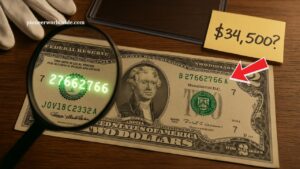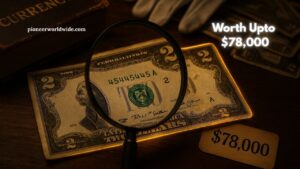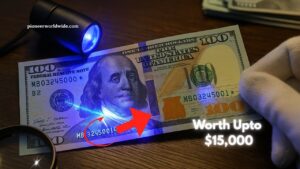In the world of currency collecting, certain misprints and errors can transform an ordinary bill into a highly valuable collector’s item.
One such example is a $100 bill with a misaligned seal, which recently sold for an astounding $85,000 at auction.
This article delves into the details of this rare find, explaining what makes such bills so valuable, how to identify them, and what collectors should look for when evaluating their own currency.
Understanding Misaligned Seals
What Is a Misaligned Seal?
A misaligned seal occurs during the printing process when the Treasury Seal or Federal Reserve Seal is not properly aligned with the rest of the bill’s design.
This misalignment can result from errors in the printing press, leading to the seal being positioned too high, low, left, or right on the bill.
Why Are Misaligned Seals Valuable?
Misaligned seals are considered printing errors, making them rare and highly sought after by collectors. The rarity and uniqueness of these errors contribute to their high value in the market.
The $100 Bill That Sold for $85,000
Details of the Sale
- Denomination: $100
- Series Year: 1996
- Seal Misalignment: Approximately 1/8 inch off-center
- Condition: Graded as Gem Uncirculated 66 PPQ
- Auction Price: $85,000
Significance of the Sale
This sale highlights the premium that collectors are willing to pay for rare printing errors. The misaligned seal on this particular bill made it a standout piece, attracting attention from collectors and dealers alike.
How to Identify a Misaligned Seal
Step 1: Examine the Seal’s Position
- Treasury Seal: Located on the left side of the bill.
- Federal Reserve Seal: Located on the right side of the bill.
Check if these seals are centered within their designated areas. A misalignment will be noticeable if the seals are off-center.
Step 2: Measure the Displacement
Use a ruler to measure the distance between the seal and the edge of the bill. A misalignment of even 1/16 inch can be significant.
Step 3: Assess the Overall Condition
The value of a misaligned bill also depends on its condition. Bills in Gem Uncirculated condition are more valuable than those with folds, creases, or discoloration.
Factors Affecting the Value of Misaligned Bills
| Factor | Impact on Value |
|---|---|
| Degree of Misalignment | Greater displacement increases value |
| Condition | Higher grades like Gem Uncirculated are more valuable |
| Series Year | Older bills may be more valuable |
| Rarity | Unique errors are more sought after |
| Market Demand | Collector interest can fluctuate over time |
Other Notable Misaligned Bills
While the $100 bill that sold for $85,000 is a standout example, other misaligned bills have also fetched impressive sums:
- $50 Bill (Series 1996): Misaligned seal sold for $45,000.
- $20 Bill (Series 1999): Misaligned seal sold for $30,000.
- $10 Bill (Series 2004): Misaligned seal sold for $20,000.
These examples demonstrate that misaligned seals on various denominations can be valuable, depending on their rarity and condition.
Tips for Collectors
- Regularly Inspect Bills: Look through your currency for any signs of misalignment.
- Use Proper Lighting: Good lighting helps in spotting subtle misalignments.
- Consult Experts: If you find a potential misaligned bill, consult with a currency expert or professional grader.
- Keep Bills in Good Condition: Store your bills properly to maintain their value.
A $100 bill with a misaligned seal that sold for $85,000 underscores the significant value that rare printing errors can hold in the world of currency collecting.
By understanding how to identify such errors and recognizing the factors that influence their value, collectors can better appreciate and evaluate their own currency.
Whether you’re a seasoned collector or a newcomer, keeping an eye out for misaligned seals could lead to discovering a valuable piece of history hidden in your wallet.
FAQs
How can I tell if my $100 bill has a misaligned seal?
Examine the Treasury and Federal Reserve seals for proper alignment. If they appear off-center, measure the displacement to confirm.
Does the series year affect the value of a misaligned bill?
Yes, older series years can increase a bill’s value, especially if the misalignment is unique to that series.
Where can I sell a misaligned bill?
You can sell misaligned bills through reputable auction houses, currency dealers, or online marketplaces specializing in collectible currency.




